Artist of the Week: Body-Painter Emma Hack Unifies Nature with the Human Form
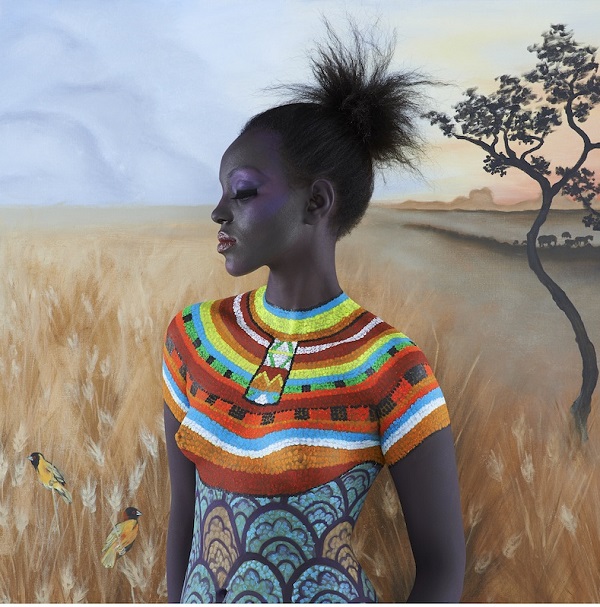
“The African” from the Beautiful Women collection by Emma Hack. Photo Credit: Emma Hack.
GALO: In your collection Birds of Prey, you have images where a woman is blended into the background but a bird or butterfly stands out, which becomes the focus of the image. What was your intention? Does this say something about nature in regard to humanity? Do you believe humans and nature must interact together to create harmony?
EH: Yes, I very much believe this. I think through art we can inspire people to recognize the beauty surrounding us through the gorgeous birds featured. You see, every feather and the positioning of the birds are really important to evoke emotion within the viewer. The blended model is secondary, supporting the bird, sometimes interacting with it and nurturing it.
GALO: On your Web site, you state that your POP! series contains three different collections, “The Optimist,” “Lessons of Love,” and “.com.” Why did you choose to pair these three categories together and what does the subject of these categories say about the theme of your collection?
EH: Lichtenstein created works featuring the helpless female, without her “Brad” how can life go on, etc. I believe we have changed so much over the years and the strength now viewed in a woman is very powerful. I first created the characters I wanted to be consistent throughout the collection: the blonde, redhead, brunette and black-haired woman. The bubbles are a fun way of evolving the characters personalities: “The Optimists” are always looking on the bright side; “Lessons of Love” are strong women’s views of how to get over a relationship; and “.Com” moves into the social media conversation taking over the world today, and how easily we have taken the new sayings and words into our vocabulary.
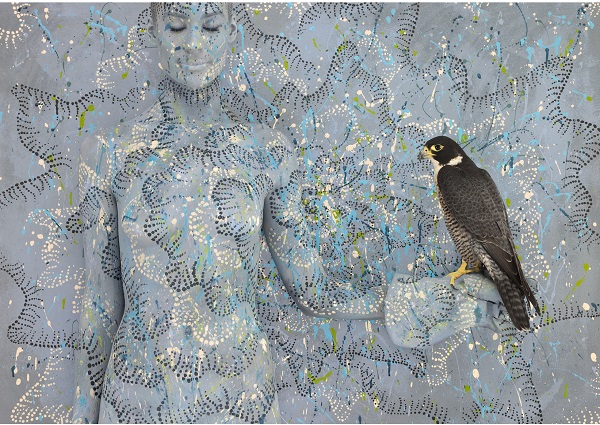
“Peregrine Falcon with Spotted Sun” for the “Birds of Prey” collection by Emma Hack. Photo Credit: Emma Hack.
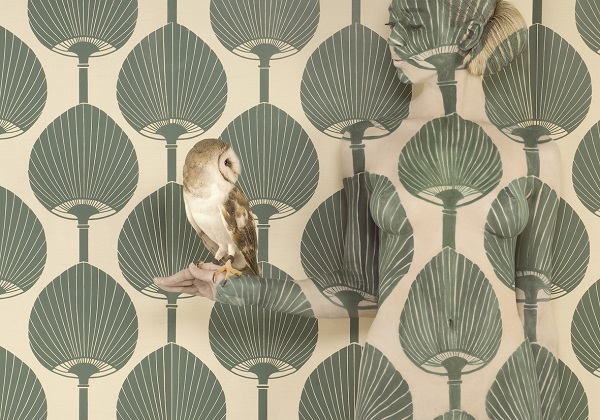
“Wallpaper Owl” in the Birds of Prey collection by Emma Hack. Photo Credit: Emma Hack.
GALO: In an interview with the Hong Kong Tatler, you state that “there are bits and pieces where [the background and the model don’t] actually match up. But the illusion of it matching up is really quite beautiful.” During the process of your artwork, how important is the aspect of the illusion versus actuality to you?
EH: You always try and do your best to blend the form, but sometimes fatigue from both the model and me can affect the results. Instead of retouching these elements, I have chosen to live with them as part of the beauty of each work. Life isn’t perfect and this symbolizes the need to let it be, rather than perfect everything as we are inclined to do in this modern age.
GALO: Overall, how do you decide what to paint on your models? Do you choose the background first, or do you decide how you want the model to look and then you create the background?
EH: It depends on the theme. With the new Florence Broadhurst works, I was able to delve into her archive and pick three that were of interest to me. Color themes were very important to me, once the designs were chosen and [when it was decided] where the model stands within the design. With Birds of Prey, there is always [the] consideration where the bird will sit to make sense with the overall feel of the work — a lot are featured on branches or stems running along the models’ arm. I love the feel of the work, making sense that the bird is there, [only] then to find the model blended within detailed areas.
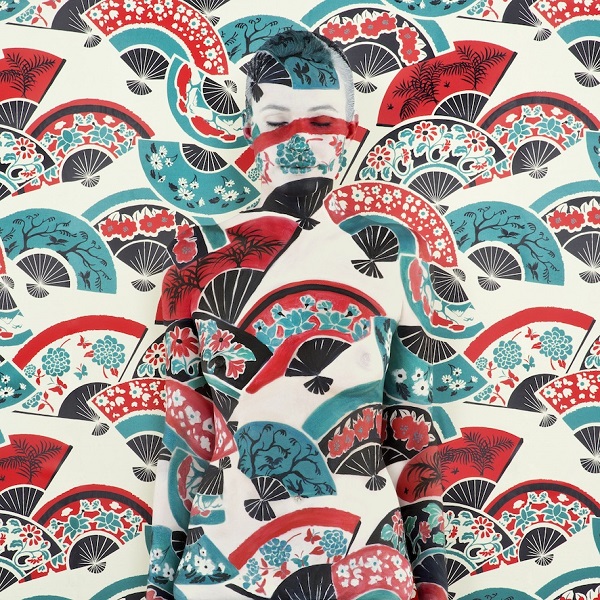
“Fans” from the Florence’s Archives collection by Emma Hack. Photo Credit: Emma Hack.
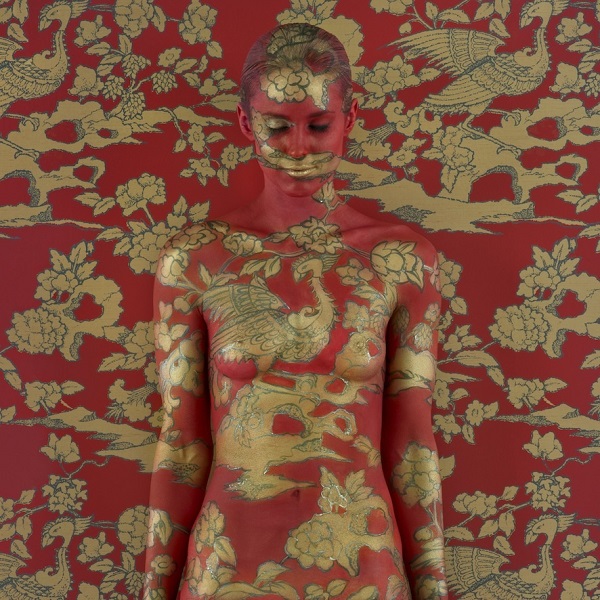
“Phoenix” from the Florence’s Archives by Emma Hack. Photo Credit: Emma Hack.
GALO: You say that Florence Broadhurst’s wallpaper samples influenced your body art creations. What exactly did you feel when you saw these wallpaper samples? How did you incorporate your own emotions and artistic voice into all of your muses from the past?
EH: The Broadhurst work came to me in 2005. I had been trying to find a way to create the illusion of someone blended into a wall environment as I was inspired by Veruschka [von Lehndorff], who used to paint herself into rustic walls and backgrounds. As soon as I saw the Broadhurst wallpaper at a homeware store, it was like a light bulb that had gone off. I just knew it was right. I think incorporating the animals in the works and the placement of models within the frame allowed me to play with the creations.
GALO: What are the challenges in combining painting, body art, and photography to create your final product?
EH: There are many challenges. It is a craft that is very difficult and you must be disciplined with a muse that wants to create something as beautiful as much as you do. I just work through the steps, creating the backgrounds, painting the model, and then photographing. If I worry too much about a component, it would probably stop me, so I usually throw myself into collections before I think too much about the “how.” I will always find a way!
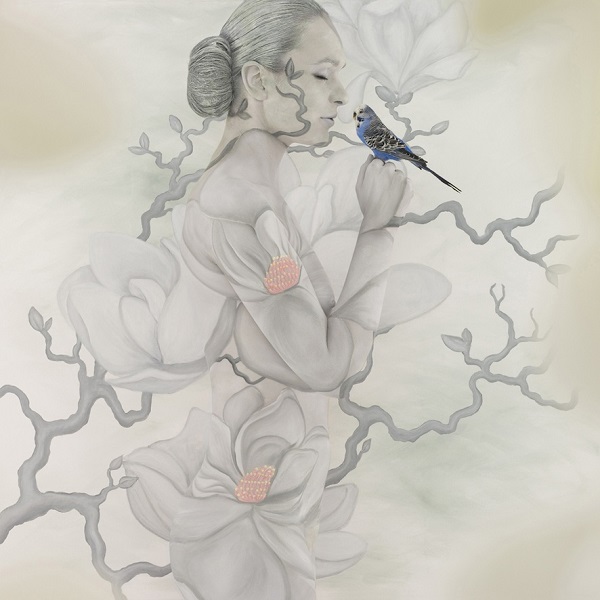
“Utopia – Magnolia Cradled Budgie” from Birds of Prey by Emma Hack. Photo Credit: Emma Hack.
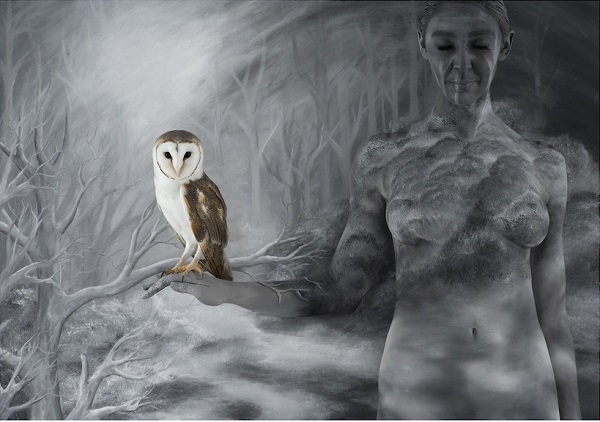
“Landscape — Woods” from the Birds of Prey collection by Emma Hack. Photo Credit: Emma Hack.
GALO: While painting the background and Wouter “Wally” Andre De Backer of Gotye for his music video “Somebody That I Used to Know,” how did you change your approach from painting people for photographs to painting people for a video, and what was the biggest challenge you faced while doing this project? Do you have plans to paint for other music videos?
EH: Firstly, I don’t think I could do another music video, as the one created is so iconic there is no chance to surpass it and it has been done. I am more interested in moving forward with creating different things for projects such as this. Fatigue was a huge issue; I worked for 23 hours straight on both Gotye and Kimbra. Stop animation has been a passion of mine for some time now, so I understood the process and what it involved. Mostly, my work is fluid in movement and creating, so the stop/start of this way of capturing the work was difficult, but so worth it in the end!
To view more of Emma Hack’s creations, be sure to visit her Web site. Photo gallery below best viewed in full-screen mode; click the icon on the far-right top corner.
Video courtesy of gotyemusic.

